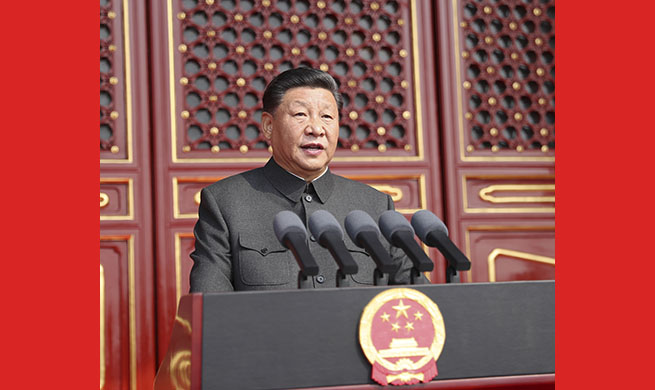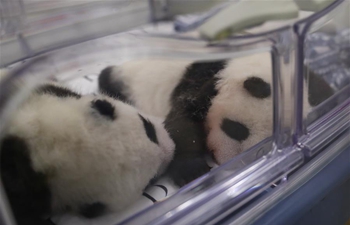CHICAGO, Oct. 2 (Xinhua) -- Researchers at the University of Illinois (UI) are repurposing biological molecules that failed in clinical trials for cancer treatment into organic semiconductors for use in chemical sensors and transistors.
According to a news release posted on the UI website on Wednesday, the researchers were surprised when two avenues of research, namely pharmaceutical development and printable electronics, just merged in the lab with the discovery of semiconductor-like features in a well-studied bioactive molecule. The molecule, which inserts itself into DNA to prevent replication, was once explored as a potential anti-cancer agent.
These molecules, called DNA topoisomerase inhibitors, are flat and contain neatly stacked columns of electrically conductive molecular rings, features that make a good semiconductor. Distinct from a typical semiconductor, these molecular columns are linked together by hydrogen bonds that can move charges from column to column, forming bridges that transform the entire molecular assembly into a semiconductor.
"These molecules can interact with biological material with high specificity, making them good candidates for use in biosensors," said UI chemical and biomolecular engineering professor Ying Diao. "They are also easily printable but will require new solvents because they are chemically different than other organic semiconductors. The fabrication infrastructure is already in place."
The researchers printed and tested the semiconductors and acknowledged that their efficiency and performance need improvement.
The real excitement regarding this advance will come from the possibility of discovering similar molecules, Diao said.
"We envision partnering with researchers in machine learning who can train computers to spot the unique characteristics of these molecules," Diao said. "They can mine the vast pharmaceutical databases available today in search of molecules with similar, or maybe even better semiconducting properties."
The findings have been published in the journal Nature Communications.













